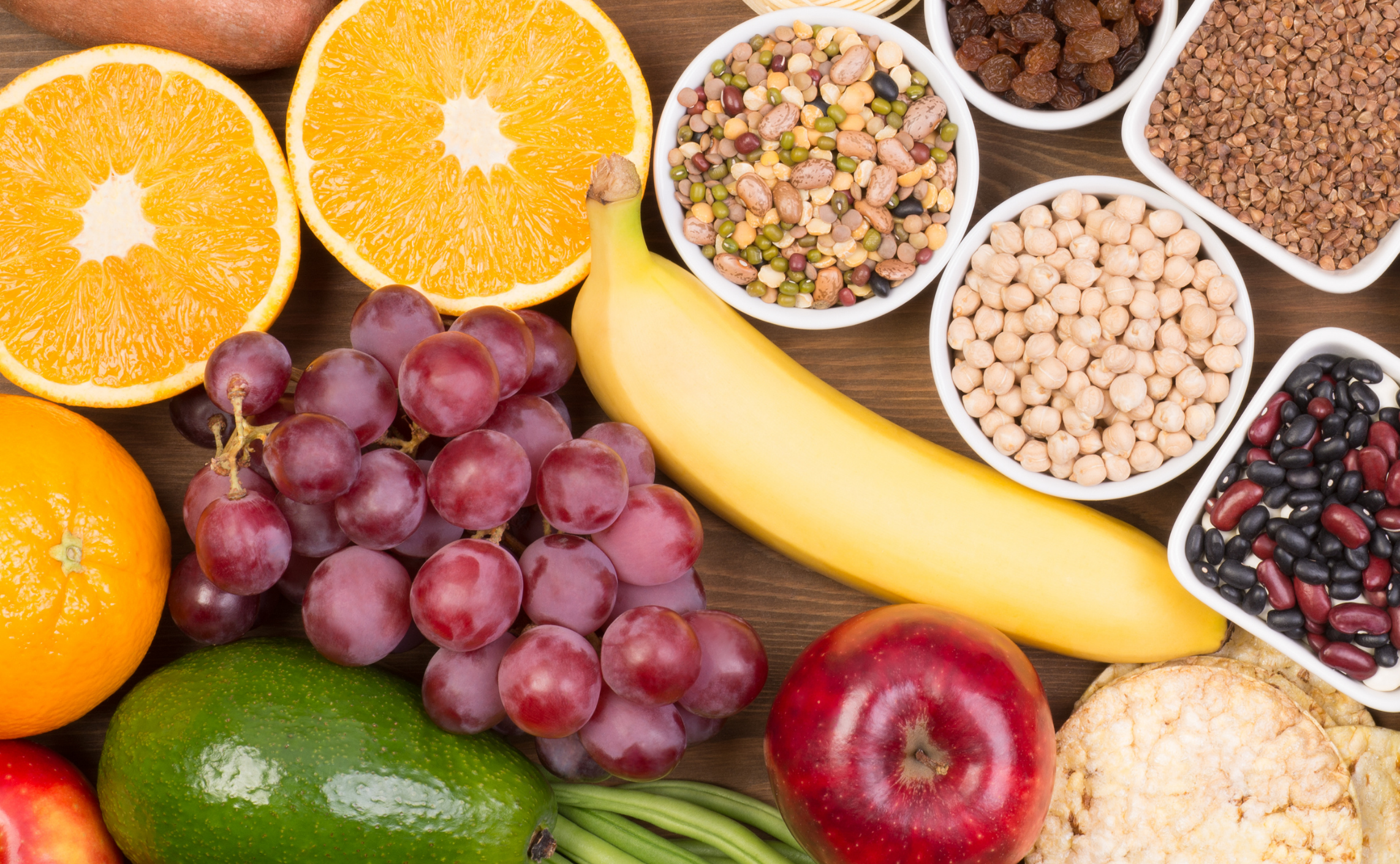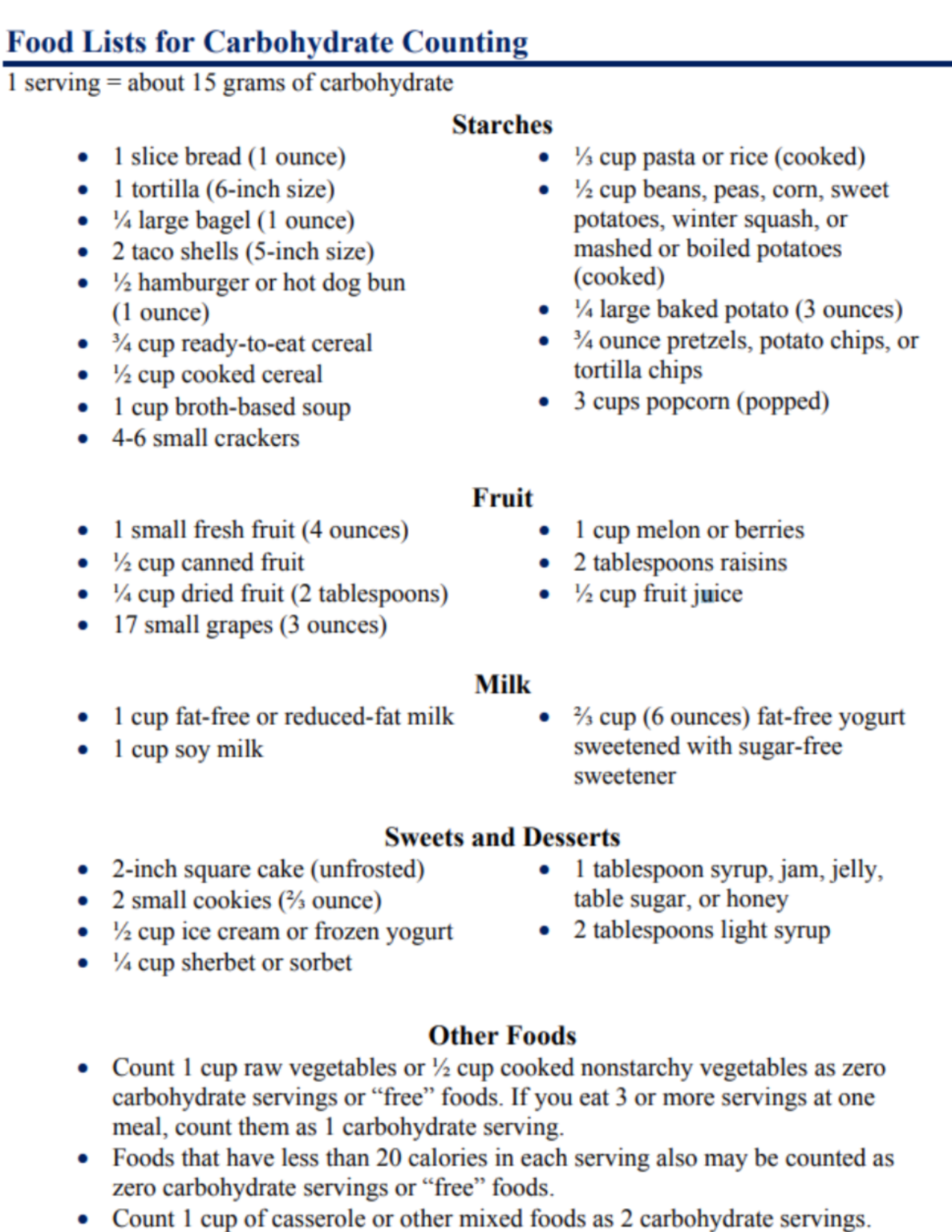
What are carbohydrates?
When we think of carbohydrates, we either think about pizza, fries or sweets and often, the word “bad” comes to mind.
But carbs aren’t all bad. They actually play an important role in providing our bodies with a source of energy. It’s important to learn which carbs are better choices and how many servings of them to eat.
There are three different types of carbohydrates: sugar, starches and fiber. They can be found in whole grains, fruits and dairy products (the healthy stuff) but they are also in processed foods with added sugar (the stuff we should limit).
So yes, the type of carbohydrates you eat makes a difference! Carbs come in two different forms: simple or complex. The form depends on the food’s chemical structure and how quickly the sugar is digested or absorbed.
Simple carbohydrates get digested quickly, sending immediate spikes of glucose (energy) into the blood stream. Examples include cookies, cereals and chocolate.
Complex carbohydrates are digested slowly and offer a lower and steadier release of glucose into the blood stream. Examples include foods like oatmeal, beans and whole grain bread.
How do carbohydrates affect people with type 2 diabetes?
Reducing the total amount of carbohydrates you consume is an effective way to improve blood glucose levels (nice!). This is especially true for those with type 2 diabetes who’d like to improve their time in range or reduce medications.
What’s a serving size?
As with everything we eat, serving size matters. Even when you eat the healthier kind of carbs (like fruits and dairy), it’s still important to eat the recommended amount. A great way to stay on top of it is to know the recommended number of servings you should eat per day. Here is a list of healthy carbohydrates, examples of serving sizes and ideas for foods (and single serving sizes) to eat:
Fruits
Fresh, frozen, canned and dried
4 servings per day
Examples:
1 medium whole fruit
½ cup cut-up fruit
¼ cup 100% fruit juice
¼ cup dried fruit
Grains
At least half of your daily carb intake for the day should be whole grain/high in dietary fiber.
6 servings per day
Examples:
1 slice bread
1 small tortilla
1 cup ready-to-eat cereal flakes
1 oz (⅛ cup) uncooked pasta or rice
1/2 cup cooked rice, pasta, or cereal
1/2 cup popped popcorn
Dairy
Low-fat and fat-free
3 servings per day
Examples:
1 cup milk
1 cup yogurt
What is carb counting?
Counting carbs helps you keep track of how many carbs you’re eating and drinking each day. This amount is measured in grams, with 15 grams of carbohydrates in a food equaling one carbohydrate serving/choice (15 grams = 1 serving).
Try out these tips for keeping track of your carb intake:
- Learn which foods have carbohydrates.
- Read the nutrition facts on the back of the food label, or learn to estimate the number of grams of carbs in the foods you eat.
- Add the grams of carbs from each food you eat to get your total for each meal or a total for the day.
- Aim for 3-4 carb choices during mealtime and 1-2 choices as a snack. This accounts for a 2000 calorie diet, but individual needs vary per person. Remember to adjust up or down based on how your blood glucose level responds, and discuss it with your Level2 health coach if you have questions.

Be sure to contact your coach for more recommendations and tips.
*Level2 does not guarantee any individual can reduce medications or achieve any specific outcomes. Your individual results will vary.
Mar. 25 2021